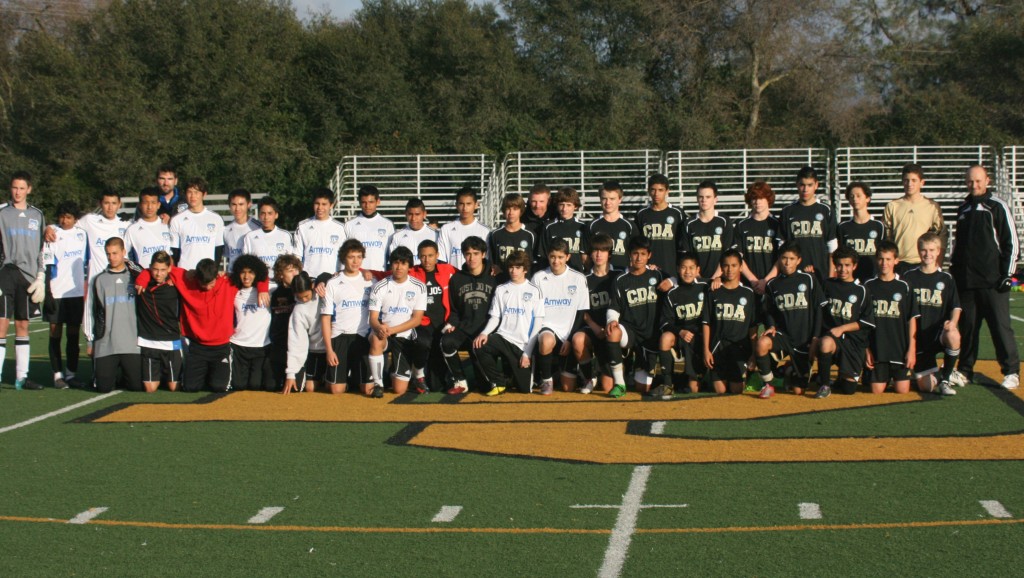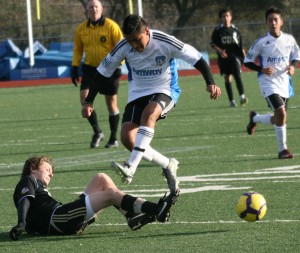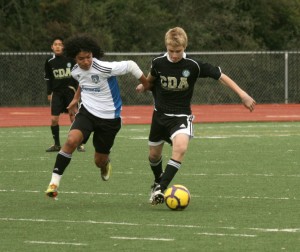Twenty-two area high school seniors who have been actively involved in Placer United Soccer Club and/or California Development Academy will take their athletic skills to the next level as they move on to their chosen colleges and universities.
Paul O’Brien, Placer United Soccer Club Director of Boys Coaching, said, “These students all share the qualities of passion, commitment, leadership, and drive—combined with a love of the game—that will help them go far in their college careers.”
These athletes will gather Wednesday, February 2nd at 6:30pm in Loomis, to sign their letter of intent or letter of commitment to their chosen schools where they will continue to play soccer:
Melanie Bertrand – Rocklin High School – University of Nevada (Div. 1), Reno, NV
Seth Casiple – Rocklin High School – University of California, Berkeley (Div. 1), Berkeley, CA
Savannah Coiner – Rocklin High School – Clemson University (Div. 1), Clemson, SC
Austin Dunn – Placer Union High School – University of San Diego (Div. 1), San Diego, CA
Mackenzie Edwards – Whitney High School – California State University, Chico (Div. 2), Chico, CA
Morgan Edwards – Whitney High School – California State University, Chico (Div. 2), Chico, CA
Erika Garcia – Dayton High School (Nevada) – Harvard University (Div. 1), Cambridge, MA
Lexi Giusti – Yuba City High School – Lesley College (Div. 3), Cambridge, MA
Connor Hallisey – Granite Bay High School – Univerisity of California, Berkeley (Div. 1), Berkeley, CA
Megan Hanson – Rocklin High School – Dominican University (Div. 2), San Rafael, CA
Matthew LaGrassa – Pleasant Grove High School – California Polytechnic University, San Luis Obispo (Div. 1), San Luis Obispo, CA
Lindsey Matlock – St. Francis High School – Houston Baptist University (Div. 1), Houston, TX
Andrew Mills – Jesuit High School – Princeton University (Div. 1), Princeton, NJ
Kendall Modiste – Granite Bay High School – San Diego State University (Div. 1), San Diego, CA
Kelly Morning – Roseville High School – University of Nevada (Div. 1), Reno, NV
Marwan Nazanda – Bella Vista High School – University of California (Div. 1), Irvine, CA
Chelsea Putman – Granite Bay High School – Point Loma Nazarene (NAIA), San Diego, CA
Daylon Schiffel – Cornerstone Christian School – University of Central Arkansas (Div. 1), Conway, AR
Grant Silvester – Rio Americano High School – University of Virginia (Div. 1), Charlottesville, VA
Marlo Smith – Whittell High School, South Lake Tahoe – University of Nevada (Div. 1), Reno, NV
Matthew Wiesenfarth – Jesuit High School – University of California, Davis (Div. 1), Davis, CA
Abby Williams – Christian Brothers High School – Lafayette College (Div. 1), Easton, PA
States Ron Benjamin, Director of Girls Coaching, “I have had the privilege of seeing these kids not only grow as exceptional players, but as exceptional people. They are driven individuals who thrive by seeing their teams succeed. They love the game and their hard work both on and off the field will no doubt take them far in their college careers.”
These players worked hard in the classroom and on the soccer field, and now they’re reaping the rewards of attractive college offers. PUSC and CDA are very proud of their accomplishments, and we look forward to witnessing their future achievements.





